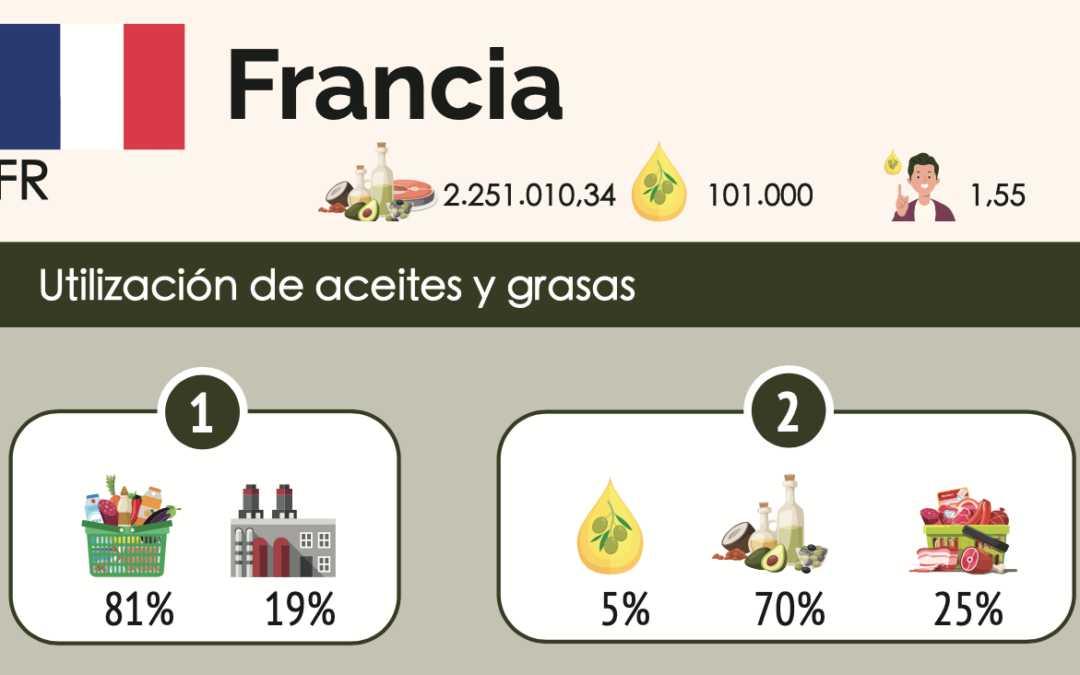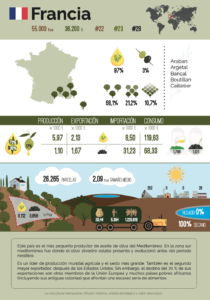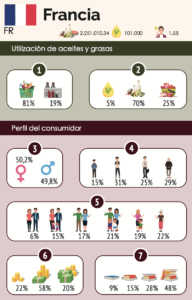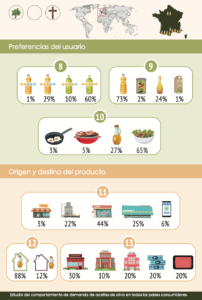France is a country located in Western Europe. It has about 67.4 million inhabitants and is renowned for its wines and sophisticated gastronomy. It is the smallest producer of olive oil in the Mediterranean. The largest olive plantations it has are located in the southeast of the country.
It currently has 55,000 hectares of olive groves. It is ranked 22nd in olive grove cultivation area and 23rd in olive oil production.
Of the total production it harvests, 97% goes to olive oil production and the remaining 3% to table olive production. France currently produces around 5,970 tons of olive oil and 1,100 tons of table olives.
The olive grove cultivation in France is composed as follows: about 37,462 hectares belong to traditional olive grove cultivation, 11,682.15 to intensive cultivation and 5,833 to super-intensive olive grove cultivation. This translates into 68.1% destined to traditional cultivation, 21.2% to intensive cultivation and 10% to super-intensive cultivation. There are no irrigated crops, so 100% of the crops are rainfed.
Of the olive oil produced, 70% is high quality olive oil (virgin or virgin oil), the remaining 30% is used to produce low quality olive oil, called lampante.
It is a world leader in agricultural production and the sixth largest that exists. It is also the second largest exporter, after the United States. However, 70% of its exports go to other members of the European Union and many poor African countries (including its former colonies), many of which are facing serious food shortages.
The predominant olive varieties in this country are Araban, Argetal, Bancal, Boutillan and Cailleter.
It has about 25,264 olive grove plots, of which the average size is 2.09 hectares. In terms of productivity per hectare, 0.112 tons of olive oil and 0.658 tons of table olives are generated.
The turnover generated in the olive oil sector in France is around 20.44 million euros. The country has 202 mills and 26 bottling plants. To date, there are no olive oil mills or refineries in France. The annual number of working days in these sectors is 1,229,818.
Of the total consumption of edible fats in France, the consumption of olive oil stands at 101,000 tons, which corresponds to 5%. The per capita consumption of olive oil currently corresponds to 1.55 kg/person.
Olive oil consumption in women is slightly higher than in men, at 50.2% and 49.8% respectively. The age range which consumes the highest amount of olive oil is between 34 and 49 years old, which is 31%, followed by the age range over 65 years old
In terms of family structure, the highest percentage of olive oil consumption is among single or widowed people (22%), followed by middle-aged families with children (21%).
In those with a medium income level, the consumption of olive oil is predominant, with 58% of the population consuming olive oil. In addition, those who have a higher level of education, such as a university degree, have the highest consumption of olive oil (48%).
Among the different olive oils that can be consumed, the consumption of extra virgin olive oil is quite significant in this country, standing at 60%, followed by the consumption of olive oil at 29%, and among the people who consume olive oil, the consumption of olive oil in PET containers stands out at 73%, followed by glass.
It is mostly used as a condiment, for example for salads.Therefore, it is used raw, and this amounts to a significant percentage that oscillates around 65%.
With regard to the acquisition of olive oils, the French mainly acquire it in supermarkets, followed by oil mills, bars or points of sale. Olive oils are least frequently bought in traditional stores.
They tend to consume it in 88% of their own homes, but it is important to note that 12% of consumption takes place outside the home. The establishments where olive oil is used outside the home are bars and restaurants, followed by canning and processing industries.




